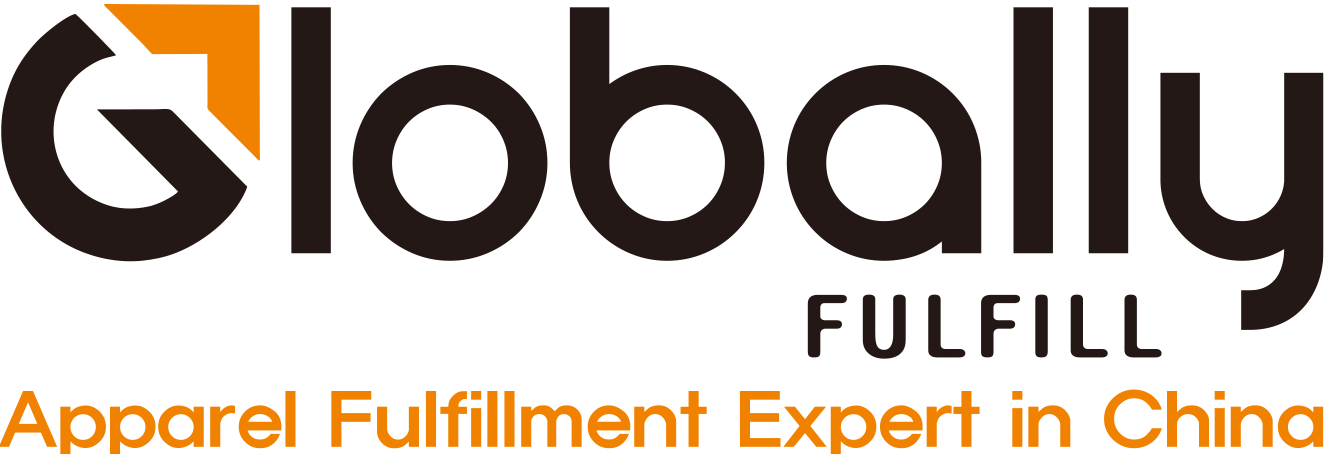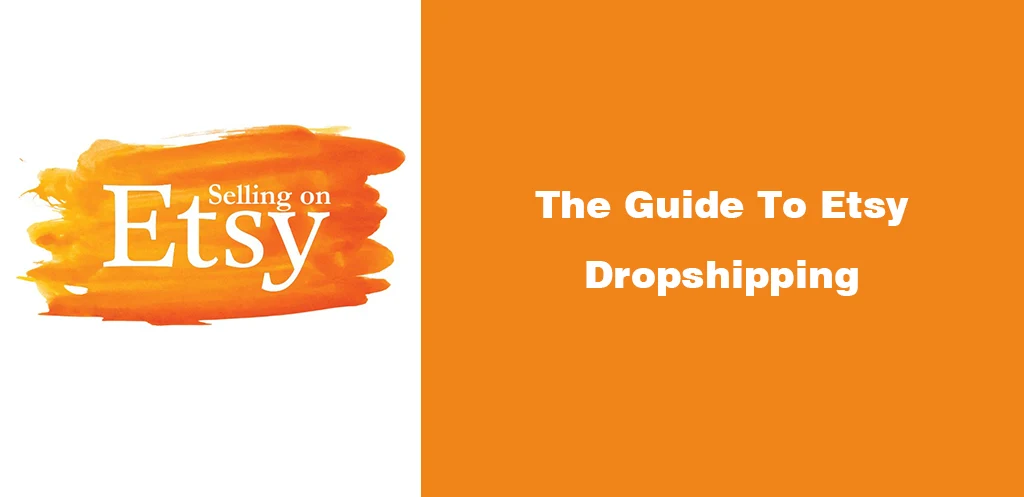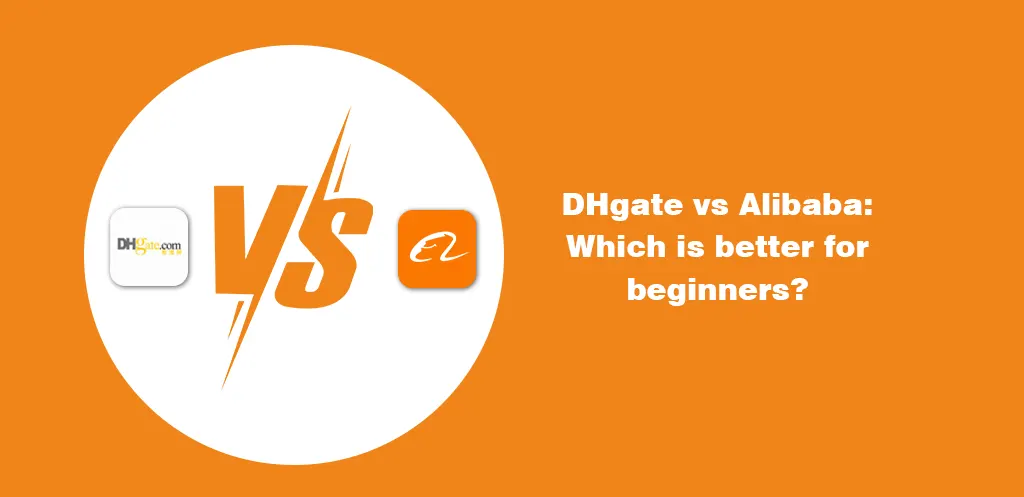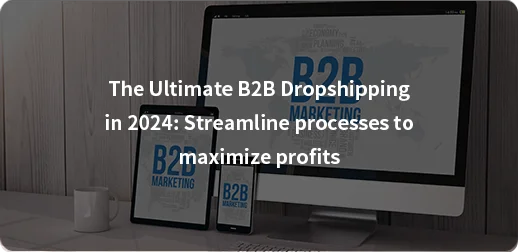
Garment manufacturing is the backbone of e-commerce businesses. It directly impacts product quality, brand image, and customer satisfaction.
The ability to produce high-quality garments efficiently and cost-effectively is a key factor in the success of any online apparel business.
By partnering with a reliable fulfillment service provider, you can focus on your core business ventures while entrusting the manufacturing process to experienced professionals.
Throughout this blog post, we will delve into the key stages of the garment manufacturing process. We will uncover key points to help you succeed in your apparel business.
We will cover key stages of the garment manufacturing process, including design, sourcing, production, quality control, and packaging.
Moreover, we’ll provide insights into managing production delays, inventory, and demand forecasting. Let’s together explore how to optimize your garment manufacturing operations for success.
By the end of this blog post, you will gain a comprehensive understanding of garment manufacturing, and gain valuable insights on selecting the right manufacturer, implementing quality control measures, and overcoming manufacturing challenges.
Garment manufacturing doesn’t have to be a daunting task. With a well-rounded understanding of the manufacturing process, you can streamline your operations.
You have an advantage in achieving remarkable success in the competitive world of online apparel businesses with the guidance of a reliable fulfillment service provider.
Why Source Apparels from Guangzhou, China?

Guangzhou is a thriving hub for the textile industry and has established itself as a leading global manufacturing center where Globallyfulfill comes from.
By sourcing from this region, entrepreneurs can tap into a wealth of opportunities and benefits. Here are five reasons why sourcing from Guangzhou could be beneficial for your business:
1. Abundance of High-Quality Fabrics and Materials
Guangzhou takes pride in a diverse and extensive supply chain of fabrics and materials.
They boast luxurious silks and fine cotton, as well as high-performance synthetic blends. With these resources, you can have access to a wide range of options to suit your design and quality requirements.
2. Competitive Pricing
Guangzhou’s textile industry benefits from economies of scale and efficient production processes.
As a result, you can source fabrics and materials at competitive prices, ensuring cost-effectiveness in your garment manufacturing operations.
This competitive pricing advantage allows for better profit margins and affordability for end customers.
3. Well-Developed Manufacturing Infrastructure
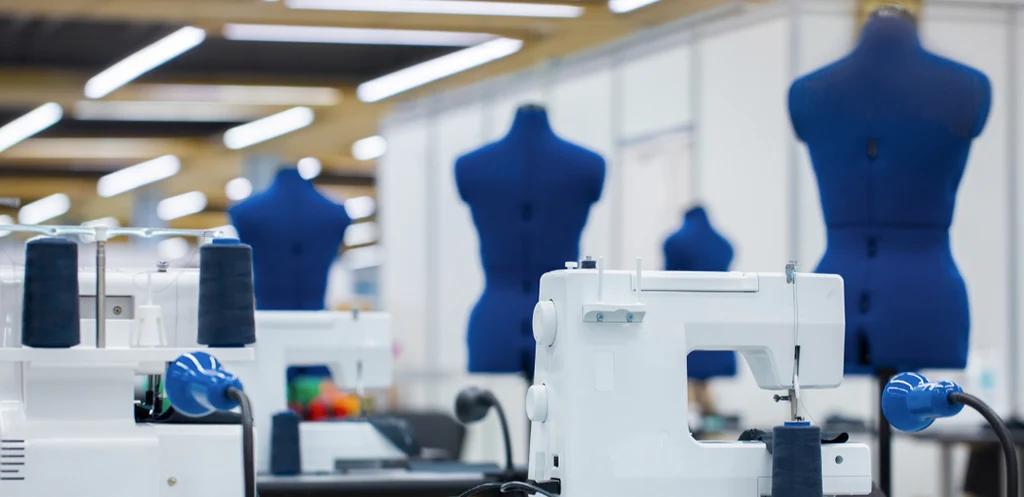
You can benefit from the state-of-the-art machinery, technology, and production facilities. Guangzhou has invested significantly in its manufacturing infrastructure.
This infrastructure enables efficient and streamlined production processes, reducing lead times and ensuring quicker turnaround times for garment manufacturing. As an entrepreneur, you can definitely rely on the region’s advanced capabilities to meet your production needs effectively.
4. Skilled and Experienced Labor Force
You can find a skilled and experienced labor force in Guangzhou’s manufacturing industry. Workers in the region have a deep understanding of garment manufacturing techniques.
They possess the expertise to produce high-quality apparel. Their attention to detail, craftsmanship, and commitment to quality contribute to the overall excellence of garments manufactured in Guangzhou.
5. Well-Established Supply Chain and Logistics

Guangzhou has developed a robust and efficient supply chain and logistics network. This allows for smooth material sourcing, timely delivery of components, and efficient transportation of finished garments.
They have a well-established network that ensures the smooth flow of materials and products by sourcing from Guangzhou.
These five factors contribute to a seamless and successful garment manufacturing process, ultimately enhancing the overall success of your e-commerce business in the apparel industry.
Key Stages in the Manufacturing Process
1. Design and Product Development

The process of garment manufacturing begins with design and product development. Entrepreneurs collaborate with the design team to create unique and innovative designs for their garments.
If you are an entrepreneur launching a line of activewear, the design team can create sketches and technical specifications for performance-enhancing features such as moisture-wicking fabrics and ergonomic stitching.
2. Fabric and Material Sourcing
The suppliers in Guangzhou offer a diverse range of fabrics and materials to suit different garment types.
In view of developing a sustainable clothing line, you can source organic cotton or recycled polyester fabrics that align with your brand’s eco-friendly values.
Don’t forget to choose a supplier who can guarantee that the selected fabric has undergone professional quality inspection service and complies with sustainability certification.
3. Pattern Making and Grading

Ensure that garments fit well across various sizes through accurate pattern making and grading.
Choosing suppliers whose pattern makers use advanced software and techniques to create precise patterns that cater to different body shapes and proportions.
The pattern makers have established patterns that are adjusted to accommodate different bust, waist, and hip measurements for your collections of dresses.
4. Sample Production and Approval
During the sample production stage, manufacturers can produce a small batch of garments based on the approved designs and patterns.
You can then evaluate the samples for factors such as fabric quality, construction, and overall aesthetics.
You can request sample garments from the manufacturers to be tested for abrasion resistance or colorfastness to ensure long-lasting quality if you want to assess the durability of the particular garments.
5. Bulk Production
This involves coordinating with suppliers to ensure the availability of materials, managing production schedules, and maintaining consistent quality control.
If you are launching a seasonal collection, please ensure that the supplier can complete the mass production on time to meet the demand for the upcoming season.
6. Quality Control and Assurance

Quality control is a continuous process throughout garment manufacturing.
The team of manufacturers implements various quality control measures such as fabric inspections, in-line inspections, and final inspections.
They adhere to international quality standards to ensure that each garment meets the desired specifications.
You may conduct tests for color accuracy, seam strength, and garment measurements to guarantee that the products meet the highest quality standards.
7. Packaging and Labeling

Proper packaging and labeling can greatly impact your branding. It’s also meant for protecting garments during shipping.
Globallyfulfill offers a green packaging solution tailored to your brand identity.
Most consumers around the world prefer more sustainable materials. Their green packaging pays great respect to mother nature with this eco-friendly option.
Most of their packaging is compostable, with varied sizes to choose from, as well as different types of material that fits to specific purposes.
Choosing the Right Garment Manufacturer
When selecting a garment manufacturer, several factors come into play.
It is essential to evaluate the manufacturer’s capabilities, facilities, experience, and expertise in producing apparel specifically for e-commerce businesses.
Considering past client feedback and references provides valuable insights into the manufacturer’s track record and reputation.
Find a reputable fulfillment service provider that connects entrepreneurs with manufacturers that possess the necessary expertise and experience in catering to the unique requirements of e-commerce apparel businesses.
A. Factors to Consider in Choosing a Garment Manufacturer
1. Production Capacity
Assess the manufacturer’s production capacity in terms of their ability to handle your order volume.
Consider factors such as their production lines, workforce size, and the efficiency of their manufacturing processes.
Reach more potential by finding a fulfillment service that connects you work with manufacturers that have scalable production capabilities to meet varying order sizes and timelines.
2. Quality Standards
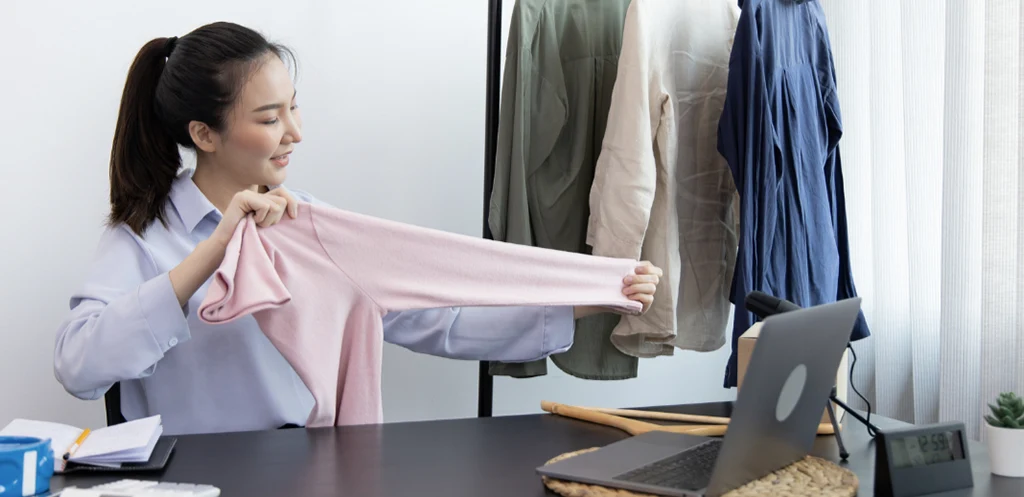
Look for a manufacturer that maintains high-quality standards throughout the manufacturing process.
Check if they follow internationally recognized quality control protocols and have certifications such as ISO 9001 (International Organization for Standardization) to ensure consistent product quality.
3. Customization and Flexibility
Determine if the manufacturer can accommodate customization requests, such as adding personalized labels or tags to your garments.
You can create a unique product line by being open for design modifications and adapting to your specific branding requirements.
4. Communication and Responsiveness

Effective communication is essential for a successful manufacturing partnership. Evaluate the manufacturer’s responsiveness and willingness to provide updates on the production process.
Clear and timely communication helps address any concerns or changes promptly.
There are companies that facilitate communication between entrepreneurs and manufacturers. In this way, both parties can foster a collaborative and efficient working relationship.
5. Cost and Pricing
Consider the manufacturer’s pricing structure and how it aligns with your budget. Request detailed cost breakdowns, including labor, materials, and any additional fees, to ensure transparency.
However, it’s important to strike a balance between cost-effectiveness and maintaining quality standards.
6. Sustainability Practices
Assess the manufacturer’s commitment to sustainability. There is an increasing consumer demand for sustainable and ethically produced garments.
Inquire about their use of eco-friendly materials, energy-efficient manufacturing processes, and adherence to social and environmental standards.
Always choose manufacturers that prioritize sustainability and can provide options if looking to align your brand with eco-conscious practices.
B. Evaluating the Manufacturer’s Capabilities and Facilities
1. Production Facilities
Assess the manufacturer’s facilities, including their production area, machinery, technology, and capacity for innovation.
State-of-the-art equipment and modern facilities can contribute to efficient and high-quality production.
Through fulfillment solutions, you can collaborate with manufacturers that have well-equipped facilities to ensure optimal manufacturing processes.
2. Supply Chain Management

Consider how the manufacturer manages their supply chain and sources materials. A well-established supply chain ensures timely availability of fabrics and other components, minimizing production delays.
Evaluate their relationships with suppliers and their ability to handle fluctuations in demand. Ensure that there’s a steady flow of materials for uninterrupted production with a wide supply chain network.
3. Research and Development Capabilities
Assess the manufacturer’s research and development capabilities, particularly if you have unique design or technical requirements.
Look for manufacturers that invest in innovation and stay updated with industry trends.
Their ability to provide design suggestions, recommend fabric alternatives, and offer technical expertise can greatly enhance the product development process.
C. Assessing the Manufacturer’s Expertise in Producing Apparel
1. e-Commerce Experience
Look for a manufacturer that understands the unique requirements of e-commerce businesses, such as private labeling, inventory management, and efficient order fulfillment.
Their experience in working with e-commerce entrepreneurs can streamline the manufacturing process and address specific challenges that arise in online retail.
2. Product Range
Consider the manufacturer’s expertise in producing garments similar to your intended product line. Assess their ability to handle specific fabric types, garment styles, and technical requirements.
Look for manufacturers who have successfully produced garments in your niche or industry. Examining their portfolio and reviewing past projects can provide insights into their capabilities and suitability for your business.
3. Compliance and Certifications
Verify if the manufacturer complies with industry regulations and standards, such as labor rights, fair trade practices, and product safety regulations.
Check if they have relevant certifications and accreditations, demonstrating their commitment to ethical and responsible manufacturing.
Working with compliant manufacturers helps ensure that your garments are produced in an ethical and socially responsible manner.
D. Reviewing Past Client Feedback and References
1. Client Testimonials
Seek out client testimonials or reviews to gauge the manufacturer’s reputation and customer satisfaction levels. Testimonials can provide valuable insights into the manufacturer’s communication, reliability, product quality, and adherence to timelines.
Online platforms and forums dedicated to garment manufacturing discussions can offer valuable feedback from entrepreneurs who have previously worked with the manufacturer.
2. References
Request references from the manufacturer and reach out to their previous clients directly.
Engage in conversations to gather information about their experience working with the manufacturer, any challenges faced, and the overall satisfaction with the collaboration.
Direct references offer firsthand information and can help you make a more informed decision.
Quality Control and Assurance

By implementing stringent quality control measures, manufacturers can ensure that the final products meet the desired standards of design, construction, and functionality.
At Globallyfulfill.com, quality control is a top priority, aiming to deliver garments of exceptional quality to e-commerce entrepreneurs and customers.
A. Importance of Quality Control in the Garment Manufacturing Process
Quality control holds immense importance in the garment manufacturing process for several reasons:
- It helps maintain consistency and uniformity across the production line, ensuring each garment adheres to the specified standards.
By delivering consistently high-quality products, manufacturers can build a strong brand reputation and gain customer trust, which can lead to increased customer satisfaction and loyalty.
- In the e-commerce industry, where customers rely on product descriptions and visuals to make purchasing decisions, quality control becomes even more crucial.
By ensuring that the garments meet or exceed customer expectations in terms of design, fit, and overall quality, manufacturers can minimize returns, enhance customer satisfaction, and generate positive word-of-mouth for their brand.
B. Implementing Quality Control Measures

To achieve consistent quality, manufacturers must implement comprehensive quality control measures at every stage of the garment manufacturing process. Some key steps include:
1. Raw Material Inspection
Conducting thorough inspections of incoming fabrics, trims, and other materials to check for quality, color consistency, and compliance with specifications.
For example, verifying the color fastness of dyes or checking the tensile strength of fabrics. This ensures that only high-quality materials are used in the production of garments.
2. Production Line Inspections
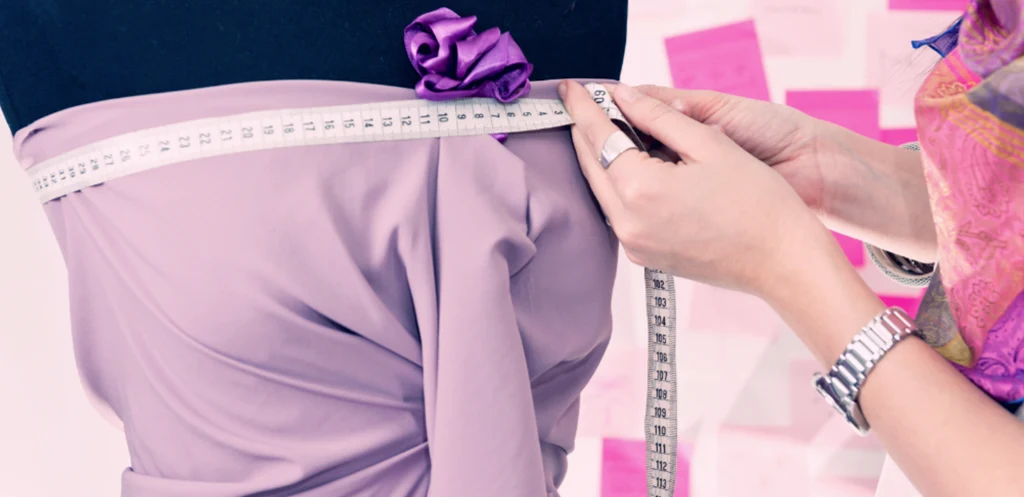
Regularly inspecting the garments during the production process to identify any potential defects or deviations from the approved samples.
This includes checking for stitching flaws, fabric inconsistencies, or sizing issues. By closely monitoring the production line, manufacturers can address any issues promptly and maintain product quality.
3. Stitching and Finishing Checks
Conducting detailed examinations of the stitching, seams, and finishing details of each garment to ensure they are executed flawlessly.
This includes checking for loose threads, uneven stitches, or faulty zippers. These checks help maintain the overall aesthetics, durability, and functionality of the garments.
C. Conducting Pre-Production and In-Line Inspections
Pre-production inspections involve thoroughly reviewing initial samples and prototypes before starting mass production. This step ensures that the garments meet the desired design, specifications, and quality standards.
It provides an opportunity to make necessary adjustments or modifications to avoid issues during bulk production.
For instance, ensuring that the print patterns align correctly or confirming the accuracy of measurements and proportions.
In-line inspections are conducted at various stages of production to monitor the quality and consistency of the garments.
Trained quality control personnel examine samples taken directly from the production line, checking for any deviations from the approved standards.
This allows manufacturers to identify and rectify issues promptly, preventing defective garments from progressing further in the production process.
D. Performing Final Inspections and Product Testing
Final inspections are conducted once the bulk production is complete, and the garments are ready for packaging and shipping.
Highly skilled quality control teams meticulously inspect each garment to ensure it meets the predetermined quality standards.
This includes a thorough examination for any defects, inconsistencies, or deviations from the approved samples.
Measurements and functional tests may be conducted to ensure proper sizing, fit, and functionality of the garments.
Product testing involves subjecting the garments to various tests to evaluate their performance, durability, and compliance with industry standards.
For example, testing the color fastness of fabrics, conducting wash and wear tests, or checking the strength of seams and fastenings.
These tests help ensure that the garments can withstand normal usage and maintain their quality and appearance over time.
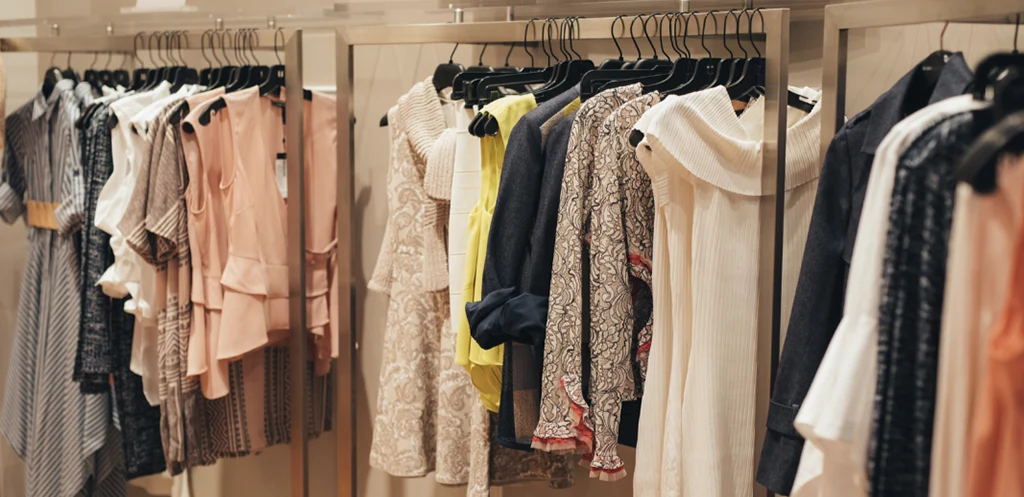
By working closely with manufacturers and employing experienced quality control teams, they ensure that the garments produced for e-commerce entrepreneurs meet the highest standards of quality, craftsmanship, and durability.
Globallyfulfill is committed to comprehensive quality control and assurance. Through us, you can establish a strong brand reputation, enhance customer satisfaction, and drive business growth in the competitive e-commerce market.
Overcoming Challenges in Garment Manufacturing
Manufacturing garments can present several challenges along the way. However, with the right strategies and approach, these obstacles can be overcome.
Here are some key areas to focus on when addressing common challenges in the garment manufacturing process:
A. Addressing Common Challenges and Obstacles
1. Cost Control
Balancing the cost of production while maintaining high-quality standards is a common challenge.
It is essential to work closely with the manufacturer to find cost-effective solutions without compromising on the integrity of the garments.
2. Supply Chain Management
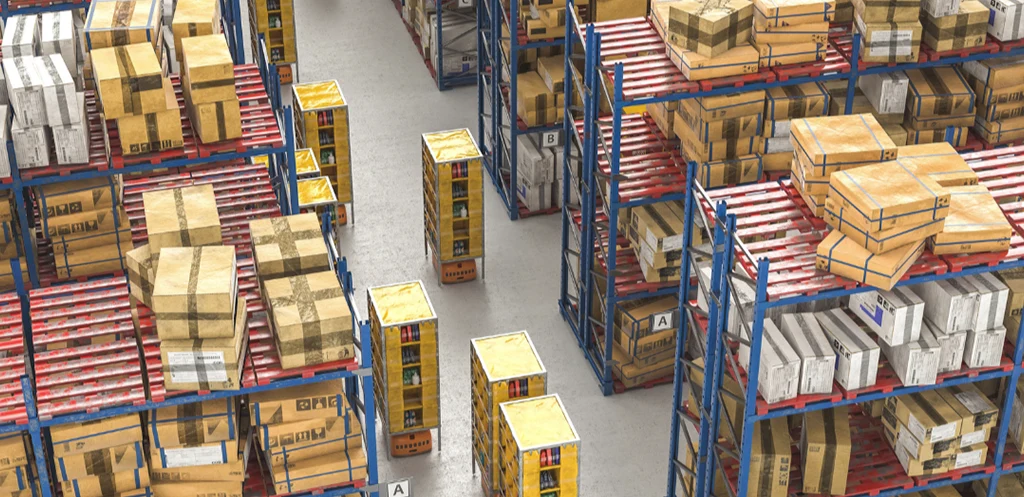
Coordinating and managing the complex supply chain involved in garment manufacturing can be challenging.
Ensuring timely delivery of raw materials, minimizing lead times, and optimizing logistics require effective supply chain management strategies.
3. Production Capacity
Matching production capacity with demand fluctuations is crucial. The ability to scale production up or down based on market demands is vital to avoid excess inventory or production delays.
4. Compliance and Regulations
Meeting regulatory requirements, such as safety standards, labor regulations, and environmental sustainability, can pose challenges.
It is important to partner with manufacturers who adhere to ethical practices and comply with relevant regulations.
5. Cultural and Language Differences
When working with manufacturers from different countries, cultural and language barriers may arise.
Overcoming these challenges requires clear and concise communication, a cultural understanding, and patience.
B. Strategies for effective communication and collaboration
1. Clear Communication Channels
Establishing clear lines of communication can result in more efficient partnership. Regular meetings, email exchanges, and video conferences can facilitate effective communication and ensure that all parties are aligned.
2. Comprehensive Guidelines
Provide detailed and comprehensive guidelines to the manufacturer regarding product specifications, quality standards, and deadlines. Clearly communicate your expectations to minimize misunderstandings and errors.
3. Feedback and Transparency
Maintain an open and transparent feedback loop with the manufacturer. Provide timely feedback on samples, prototypes, and production progress to address any issues promptly and ensure continuous improvement.
4. Technology Tools
Utilize technology tools, such as project management software or collaboration platforms, to streamline communication and document sharing.
These tools can enhance transparency and improve efficiency in the manufacturing process.
5. Regular Site Visits
Whenever feasible, plan visits to the manufacturer’s facility to establish a closer working relationship.
This enables direct interaction, builds trust, and provides a better understanding of their capabilities and processes.
C. Dealing with Production Delays and Quality Issues
1. Proactive Planning

Plan production timelines with buffer time to accommodate unforeseen delays.
Anticipating potential challenges and incorporating contingency plans can help minimize disruptions to the manufacturing process.
2. Continuous Quality Monitoring
Conduct regular inspections and quality checks at each stage of production to identify and address any issues promptly.
This includes reviewing design specifications, verifying measurements, assessing fabric samples, checking pattern accuracy, evaluating sample production, monitoring bulk production, performing in-line inspections, and conducting final inspections and product testing.
3. Collaboration for Issue Resolution
When facing quality issues or delays, work collaboratively with the manufacturer to identify the root causes and implement corrective actions.
It’s not easy to go through issues. However, maintaining a constructive and problem-solving mindset can definitely lead to your business success.
4. Performance Incentives
To ensure that the manufacturer meets agreed-upon deadlines and quality standards, consider implementing performance incentives or penalties in the manufacturing contract.
These incentives can serve as motivational factors for the manufacturer, encouraging them to prioritize timely production and maintain high-quality output. For example, offering financial bonuses for meeting or exceeding production targets or delivering superior quality garments can incentivize the manufacturer to perform at their best.
5. Open Communication
Maintain regular and proactive communication channels to address any concerns or issues that may arise. Promptly share feedback on design modifications, production progress, or quality concerns.
By fostering a collaborative environment, you can work together with the manufacturer to discuss and implement effective solutions. Encourage open dialogue, actively listen to their insights and expertise, and strive to find mutually beneficial resolutions.
Through open communication, you can ensure a smooth and productive manufacturing process, ultimately leading to the successful delivery of high-quality garments.
D. Tips for Managing Inventory and Forecasting Demand
1. Accurate Demand Forecasting
Utilize historical sales data, market trends, and customer insights to gain valuable insights into demand patterns and fluctuations. Collaborate closely with the manufacturer, sharing the forecasted demand information to align production capacity with anticipated needs.
This collaboration ensures that the manufacturing process can be optimized to meet customer demands while minimizing excess inventory or production shortages. By incorporating accurate demand forecasting, you can effectively manage inventory, streamline production, and enhance customer satisfaction through timely order fulfillment.
2. Lean Inventory Management

Implement lean inventory management practices to minimize excess inventory and optimize stock levels.
Regularly monitor inventory levels, implement just-in-time strategies, and identify slow-moving items for timely action.
3. Strategic Partnerships
Build strategic partnerships with suppliers and manufacturers to establish more efficient and flexible inventory management processes.
This can include consignment arrangements, vendor-managed inventory, or drop-shipping solutions.
4. Real-Time Inventory Tracking
You can implement real-time inventory tracking through advanced inventory management systems or software for garment manufacturing. These tools enable you to monitor stock levels, track product movement, and identify reorder points accurately.
By having real-time visibility into inventory, you can make informed decisions regarding production planning, procurement, and order fulfillment. This helps prevent stockouts, minimize excess inventory, and optimize the supply chain.
5. Collaboration with Fulfillment Service Providers
Partnering with a reliable fulfillment service provider can streamline inventory management and order fulfillment processes. These providers offer advanced warehouse management systems, order tracking capabilities, and efficient shipping solutions to enhance inventory control and customer satisfaction.
By implementing these strategies and leveraging the expertise of fulfillment service providers, you can overcome the challenges associated with garment manufacturing and optimize your operations.
Conclusion
Garment manufacturing is a multifaceted process that demands expertise and precision.
By partnering with a reputable fulfillment service provider like Globallyfulfill, e-commerce entrepreneurs like you can navigate the complexities of manufacturing with ease and confidence.
Throughout this blog post, we have covered the key stages in the garment manufacturing process. Each stage plays a crucial role in delivering high-quality garments to the market.
However, the role of a reliable fulfillment service provider cannot be overstated. We bring invaluable benefits to the garment manufacturing process.
We offer product branding, quality control, product photography, packaging, shipping, private label, and e-commerce fulfillment services.
Our expertise ensures smooth operations, timely delivery, and adherence to quality standards.
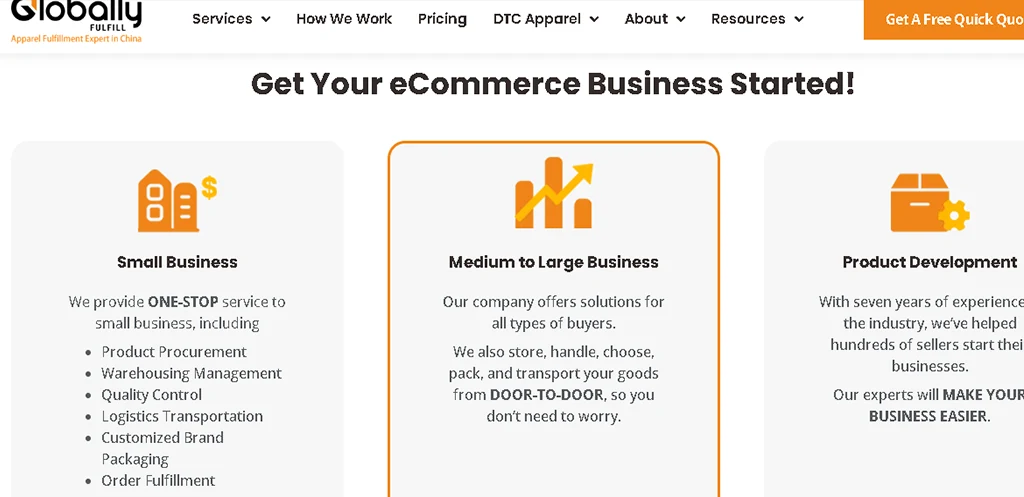
Together, we can bring your fashion visions to life and deliver exceptional products to customers worldwide!
